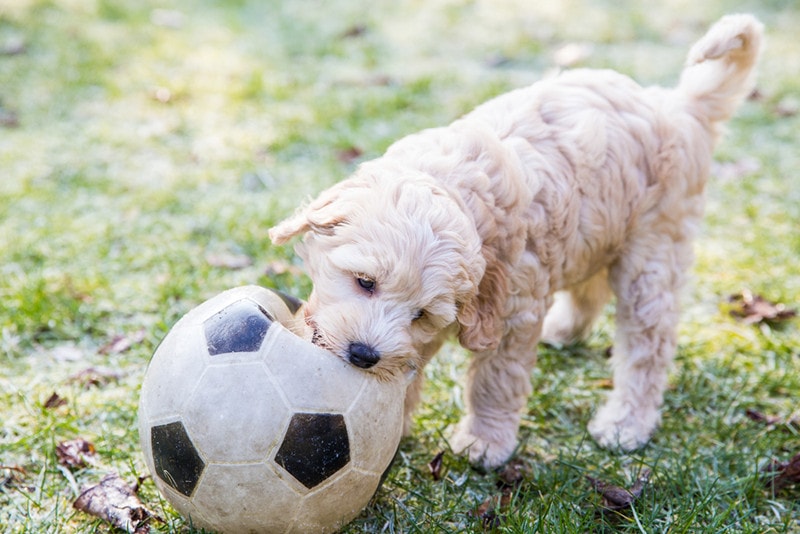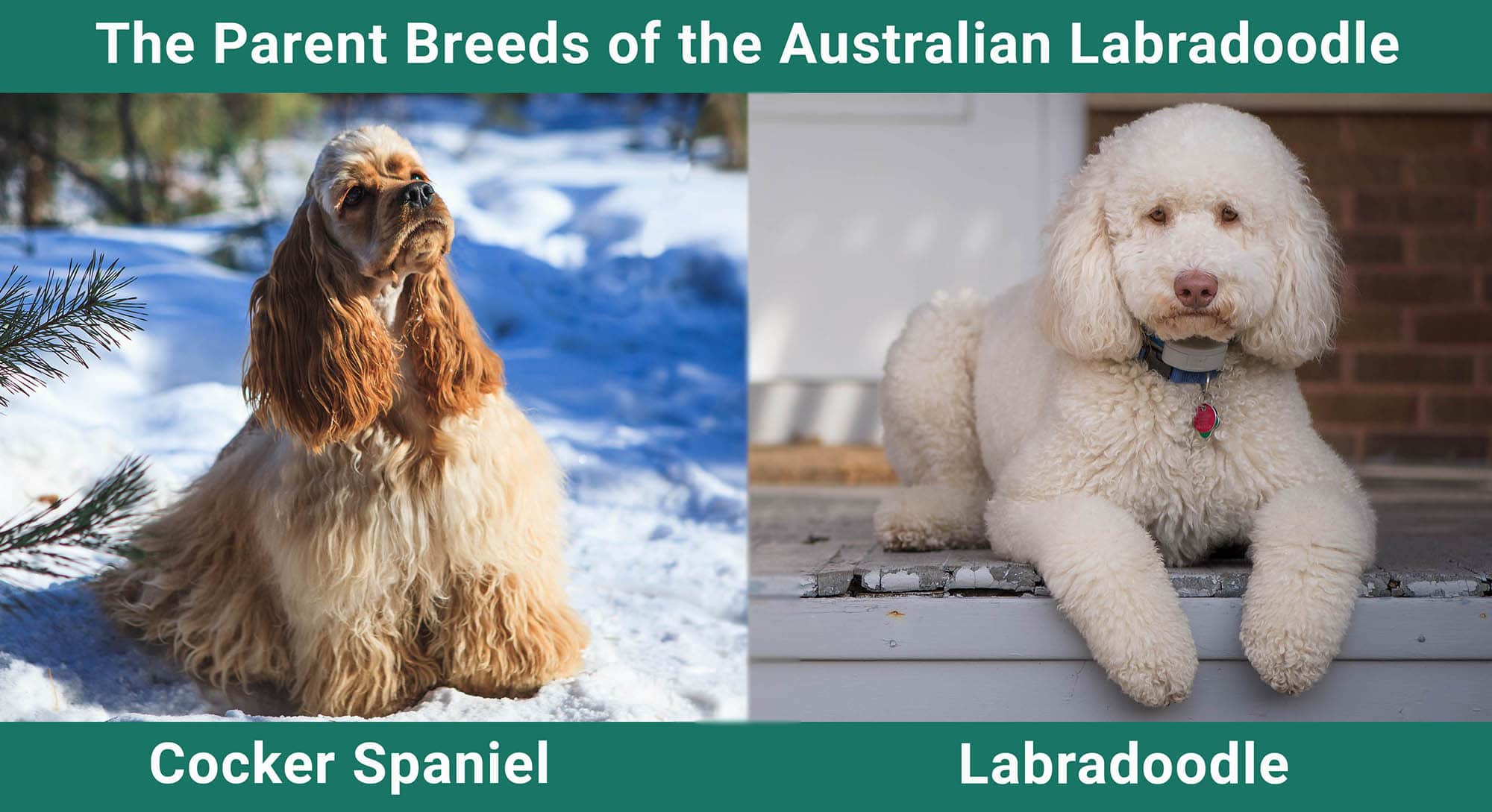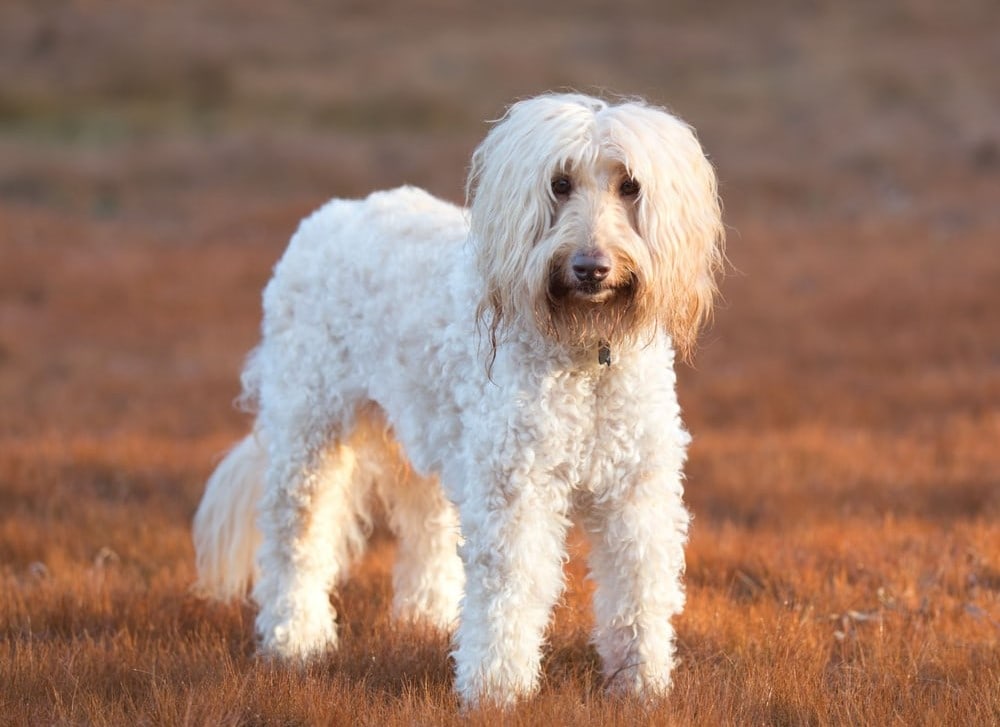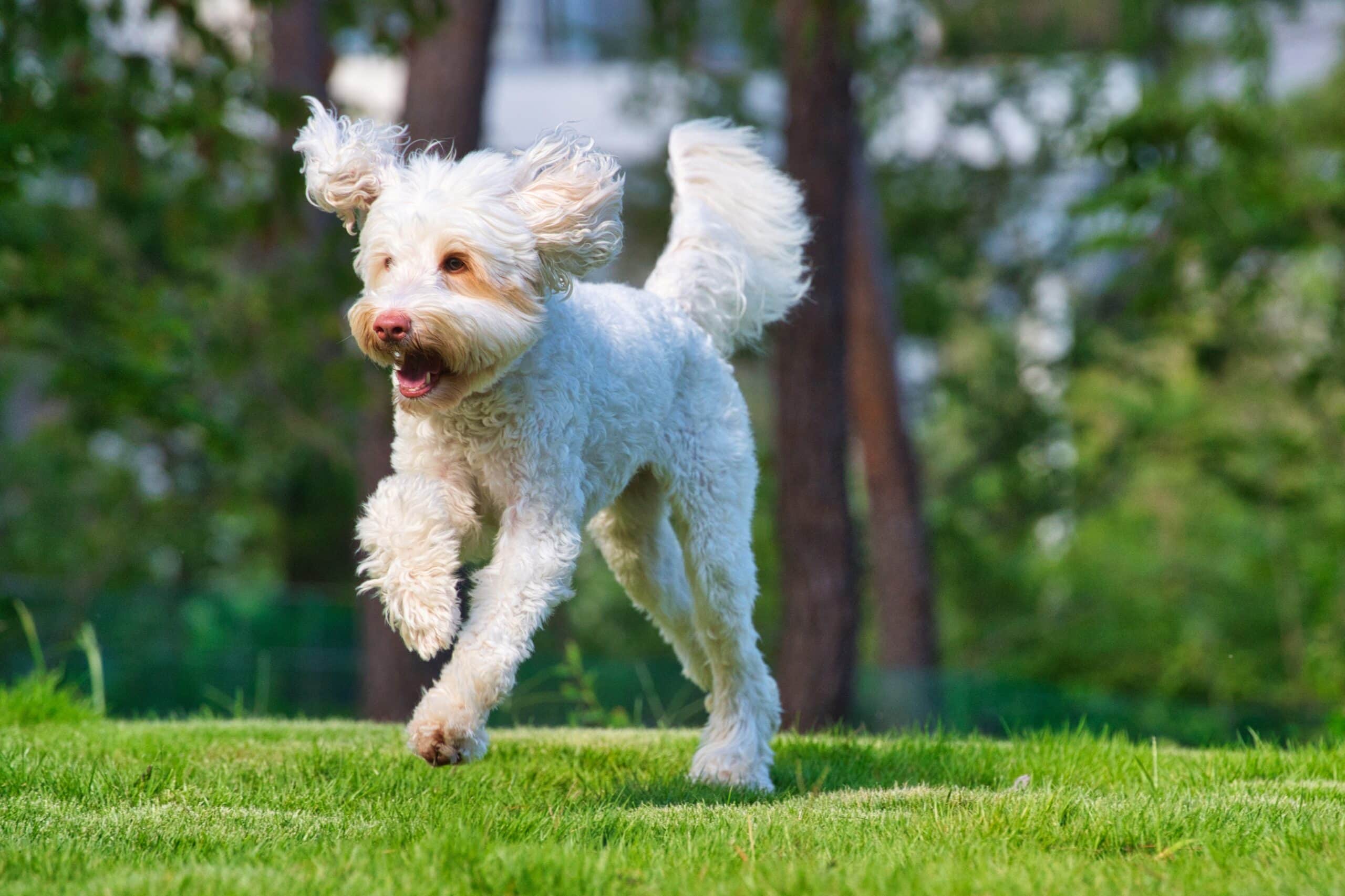
Click Below to Skip Ahead
Australian Labradoodles are adorable non-shedding dogs with loyal and affable natures. They come in three different size ranges: miniature, medium, and standard. In this article, we’ll tell you everything you need to know about the Standard Australian Labradoodle!
Breed Overview
Height:
21–24 inches
Weight:
50–70 pounds
Lifespan:
10–15 years
Colors:
Chalk, cream, apricot, gold, red, black, blue, silver
Suitable for:
Active families, those who work from or stay at home, those looking for a non-shedding pet
Temperament:
Friendly, gentle, and loyal. They get along with children and are easy to train.
Australian Labradoodles are cross between three breeds: Poodle, Cocker Spaniel, and Labrador Retrievers. They can have a wavy, free-flowing coat, or a curly, wooly coat that gives them a teddy bear-like appearance. While they’re brimming with playful energy, they’re also docile and gentle, and they get along famously with kids.
Australian Labradoodle Puppies

As puppies, Australian Labradoodles are small, fluffy balls of playful energy. They are highly sociable, but they will require lots of attention. Even as they grow older, Australian Labradoodles shouldn’t be left alone for long.
Like all puppies, Australian Labradoodles need a consistent routine and daily training sessions—luckily, these intelligent dogs are eager to please. With positive reinforcement and persistence, your teddy bear companion should pick up new commands easily.
If you do have the time and capacity to meet the needs of an Australian Labradoodle puppy, you should be able to get one from a reputable breeder. You can find a list of breeders on the Australian Labradoodle Association of America (ALAA) website. That said, Australian Labradoodles make wonderful pets even when they’re fully grown, so consider checking local animal shelters to see if you can adopt one instead!

 Temperament & Intelligence of the Australian Labradoodle
Temperament & Intelligence of the Australian Labradoodle
Australian Labradoodles are known for being affable, social, and playful. These adorable pups will love spending every minute by your side. They’re intelligent and easy to train, making them perfect for families, and both first-time dog owners and experienced dog owners alike.
Are These Dogs Good for Families? 
If you’re looking for a family pet, Australian Labradoodles will fit your requirement with joy. These dogs get along well with children. Their gentle and playful nature makes them both safe and entertaining.
Australian Labradoodles do have a lot of energy, so they need between 30 minutes and 1 hour of exercise each day. Family games such as fetch and frisbee will keep both your Australian Labradoodle and the younger members of your family happy!
Does This Breed Get Along with Other Pets?
The friendly nature of Australian Labradoodles means they’ll happily get along with just about everyone, including other pets. As long as they have been socialized properly from a young age, your Australian Labradoodle will get along with other dogs and even cats—though this depends on your cat’s personality!
Easy-going and laid-back, Australian Labradoodles are not fussy when it comes to sharing a home with other pets!
Things to Know When Owning an Australian Labradoodle:
Food & Diet Requirements 
Your Australian Labradoodle puppy will require regular feeding, with their daily calorie needs split over at least 3 meals. As they grow, you can reduce this to just two meals per day. High-quality, protein-rich kibble or canned dog food should meet all of your Australian Labradoodle’s nutritional needs.
A healthy variety of fruit and vegetables including apples, bananas, blueberries, peas, pumpkin, and carrots can be added to your pup’s diet, too, as can the occasional treats! The important thing to remember is that your dog shouldn’t have more than 10% of its daily calorie requirements as treats.
If you do occasionally give your dog foods that are naturally high in sugar—for example, strawberries—it’s also important to brush their teeth regularly. Dental sticks help to clean your dog’s teeth and treat them at the same time!

Exercise 
Australian Labradoodles need a moderate amount of exercise. They won’t need intense running or miles of walking to keep them happy, but they do need between 30 minutes and 1 hour of exercise each day.
Luckily, exercise with Australian Labradoodles can be fun for the whole family. These dogs will love joining in with family games at the park or on the beach. But you won’t have to do this every day, either. If you’d rather go for a walk around the neighborhood, your Australian Labradoodle will just as happily go along.
Training 
Training a dog is easier with a breed that’s both intelligent and eager to please—the Australian Labradoodle is both! You should begin training your Australian Labradoodle when they are around 8 weeks old. To begin with, training sessions should be short and sweet, lasting just a few minutes, but you can stretch them out as your puppy grows and their attention span increases.
Positive reinforcement and consistency are paramount when it comes to training an Australian Labradoodle. Be sure to praise your puppy and shower them with affection when they behave how you want them to.

Grooming 
Australian Labradoodles have beautiful coats that require regular brushing to prevent matting. Your puppy will need brushing from head to toe at least four times a week. As their adult coat grows in, your Australian Labradoodle will need a full-body brush at least three times a week. You may need to use round-tipped scissors to trim their hair around their eyes.
Australian Labradoodles also have hair that grows inside their ear canals. You’ll need to check their ears every month and remove any hair you see growing. This is essential to prevent them from getting an ear infection.
You won’t need to bathe your Australian Labradoodle often. In fact, doing so will strip its coat of natural oils.
Health and Conditions 
Australian Labradoodles are generally healthy dogs with a good average life span of 12–15 years. However, this doesn’t mean they are immune to sickness. Some sicknesses can be avoided through good hygiene, grooming, vaccinations and boosters, and regular check-ups with a vet.
Some serious health conditions can be inherited—this usually stems from irresponsible breeding. To improve your chances of getting a healthy dog, try to buy from responsible, reputable breeders.
3 Little-Known Facts About the Australian Labradoodle
1. Labradoodles Are Not the Same as Australian Labradoodles
Despite their similar names, these two breeds have some significant differences. A Labradoodle is a cross between a Labrador and a Poodle, whereas an Australian Labradoodle’s heritage is a mix of Labrador Retriever, Poodle, and Cocker Spaniel. They differ in size, character, health, and average lifespan.
2. Australian Labradoodles Were Bred to Be Hypoallergenic Guide Dogs
In the 1980s, Wally Conron was inspired to create a breed of dogs that had the personality and traits of a Labrador, and the low-shedding traits of a Poodle. He aimed to breed a guide dog for a visually impaired lady whose husband had allergies.
3. Australian Labradoodles Come in Three Size Ranges
While we’ve talked about the Standard Australian Labradoodle, you can also get them in miniature and medium size ranges. Miniature Australian Labradoodles only grow to 14–16 inches in height, while medium Australian Labradoodles grow to between 17–20 inches, and the standard grows to 21–24 inches.
Final Thoughts
Australian Labradoodles are perfect for active families looking for a low-shedding dog. Despite their docile and gentle nature, these friendly dogs are brimming with playful energy. They’ll want to follow their human everywhere, but they won’t enjoy being left alone at home! Their energy and size make them unsuited to small apartments, but they’ll love a home with a backyard.
Being a mix of breeds, Australian Labradoodles aren’t as prone to sickness as some other dogs, but this doesn’t make them immune, either. They need regular brushing, and their floppy, hairy ears will need regular checking and cleaning.
If you have the time and space to give an Australian Labradoodle a home, they’ll return your affection with love, loyalty, and companionship!
Featured Image Credit: Jne Valokuvaus, Shutterstock
The post Australian Labradoodle: Info, Pictures, Temperament, & Traits appeared first on Pet Keen.











